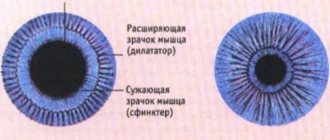If you ask a random person which substance is the most powerful poison, then there is a high probability that he will name cyanide, arsenic or strychnine. Surprisingly, these known toxic substances are far from the most dangerous.
So we decided to look into this issue and compiled a selection of the 6 most poisonous substances in the world, ordered by increasing toxicity, five of which are at least 1000 times more toxic than cyanide, arsenic or strychnine.
Cyanide
Cyanides are a fairly large group of hydrocyanic acid salts. They are all, like the acid itself, extremely poisonous. In the last century, both hydrocyanic acid and cyanogen chloride were used as chemical warfare agents and were responsible for tens of thousands of deaths.
Potassium cyanide is also famous for its extreme toxicity. Just 200-300 mg of this white powder, which resembles granulated sugar in appearance, is enough to kill an adult in just a few seconds. Thanks to such a small dosage and incredibly quick death, Adolf Hitler, Joseph Goebbels, Hermann Goering and other Nazis chose this poison to die.
They tried to poison Grigory Rasputin with this poison. True, the poisoners mixed cyanide into sweet wine and cakes, not knowing that sugar is one of the most powerful antidotes for this poison. So in the end they had to use the gun.
#3. Batrachotoxin
Many have seen in movies how South American Indians use pipes to shoot small arrows poisoned with poison. Curare is the most famous of these poisons, which is obtained from the plant Strychnos toxifera. However, the most toxic are the skins of tree frogs, of which the most lethal is batrachotoxin.
Batrachotoxin is isolated from the skin of tree frogs and is used by Indians for hunting.
Indians in western Colombia collected these frogs (the golden Phyllobates terribilis and the colorful Phyllobates bicolor) and placed them close to fire until they released enough poison to lubricate arrows. The LD50 of this toxin is about 2 micrograms per kg, which is the size of several crystals of table salt.
Batrachotoxin kills by damaging sodium channels in muscle and neuron cells, leaving them permanently open and unable to close. This ultimately leads to cardiac arrest.
Interestingly, frogs of these species are not poisonous in captivity, as they obtain the toxin from the beetles they feed on.
Bacillus anthrax
Anthrax is a very serious, rapidly developing disease caused by the bacteria Bacillus anthracis. There are several forms of anthrax. The most “harmless” one is the skin one. Even without treatment, the mortality rate from this form does not exceed 20%. The intestinal form kills about half of those sick, but the pulmonary form is almost certain death. Even with the help of the latest treatment methods, modern doctors manage to save no more than 5% of patients.
The most accessible poisons
In summer and autumn, the time comes for seasonal mushroom poisoning - by the way, these are the most accessible poisonous substances today. The most famous poisonous mushrooms are false mushrooms, toadstools, lines and fly agarics. The most poisoned mushroom is the toadstool, since it has many varieties, sometimes indistinguishable from edible mushrooms, and one such mushroom can lead to the death of several people.
False honey mushrooms are the most common poisonous mushrooms
Although the Germans have learned to prepare fly agarics in such a way that they are not poisoned by them, it is true that it takes them a lot of time to prepare these mushrooms - they boil them for days. True, the question arises - why do they need fly agaric mushrooms when you can just take other mushrooms for food? And of course, we must remember the rules for storing cooked mushrooms; even edible mushrooms can become poisonous if the shelf life is violated.
Even ordinary potatoes can be poisonous
Regular potatoes or bread can also be poisonous. When stored improperly, potatoes accumulate the substance solanine, which causes poisoning to the body. And bread becomes poisonous if flour was used to make it and contained cereals contaminated with ergot. We are not talking about fatal poisoning, but it is quite possible to ruin your health with such products.
Ear affected by ergot
In addition, there are many household chemicals and fertilizers that can also cause poisoning. For example, potassium chloride is the most common fertilizer, but if it gets into the bloodstream it becomes deadly, since potassium ions block the activity of the heart.
Amatoxins
Amatoxins are a whole group of protein poisons contained in poisonous mushrooms of the amanita family, including the deadly toadstool. The particular danger of these poisons lies in their “slowness”.
Once they enter the human body, they immediately begin their destructive activity, but the victim begins to feel the first discomfort no earlier than 10 hours later, and sometimes several days later, when it is already very difficult for doctors to do anything. Even if such a patient can be saved, he will still suffer for the rest of his life from painful dysfunctions of the liver, kidneys and lungs.
Gold in a bottle
When compiling a list of the most dangerous products in the world, one cannot ignore such a drink from Switzerland as Goldschläger schnapps, the distinctive feature of which is particles of gold added to the bottle.
View this post on Instagram
A post shared by hellomynameisjeff (@heffetakesphotos) on Feb 26, 2020 at 2:48pm PST
Fans of strong exotic liquids should take into account that the yellow metal can turn out to be an “unwelcome guest” for the body. Once in the stomach, gold leaf flakes cause poisoning. To eliminate this risk, patented bottles come with a special sieve that will prevent pieces of precious metal from getting into the glass. However, if the schnapps was bought “under the counter,” the mentioned filter tool may not be available. And it’s difficult to predict how high quality the drink will be.
By the way, allergy sufferers should completely refrain from consuming “golden schnapps”, because it contains cinnamon, which can cause anaphylactic shock in people sensitive to the spice.
Sarin
Sarin was created by German scientists trying to synthesize a powerful pesticide. But this deadly poison, which causes quick but very painful death, acquired its dark fame not in agricultural fields, but as a chemical weapon. Sarin was produced by the ton for military purposes for decades, and it was only in 1993 that its production was banned. But, despite calls for the complete destruction of all reserves of this substance, both terrorists and the military still use it in our time.
The most magnetic substance
If the inductor were a small black piece, then it would be the same substance. The substance, developed in 2010 from iron and nitrogen, has magnetic powers that are 18% greater than the previous record holder and is so powerful that it has forced scientists to reconsider how magnetism works. The person who discovered this substance distanced himself from his studies so that no other scientist could reproduce his work, since it was reported that a similar compound was developed in Japan in the past in 1996, but other physicists could not reproduce it, so this substance was not officially accepted. It is unclear whether Japanese physicists should promise to make Sepuku under these circumstances. If this substance can be reproduced, it could herald a new age of efficient electronics and magnetic motors, perhaps enhanced in power by an order of magnitude.
Strychnine
Strychnine is found in large quantities in the nuts of the tropical chilibuha tree. It was from them that it was obtained in 1818 by the French chemists Pelletier and Cavantou. In small doses, strychnine can be used as a medicine that increases metabolic processes, improves heart function and treats paralysis. It was even actively used as an antidote for barbiturate poisoning.
Nevertheless, it is one of the most powerful poisons. Its lethal dose is even less than the famous potassium cyanide, but it acts much more slowly. Death from strychnine poisoning occurs after about half an hour of terrible agony and severe convulsions.
The strongest superfluidity
Superfluidity is a state of matter (either solid or gaseous) that occurs at extremely low temperatures, has high thermal conductivity (every ounce of that substance must be at exactly the same temperature) and no viscosity. Helium-2 is the most typical representative. The helium-2 cup will spontaneously rise and spill out of the container. Helium-2 will also leak through other solid materials, as the complete lack of friction allows it to flow through other invisible holes that regular helium (or water for that matter) would not leak through. Helium-2 does not come into its proper state at number 1, as if it has the ability to act on its own, although it is also the most efficient thermal conductor on Earth, several hundred times better than copper. Heat moves so quickly through Helium-2 that it travels in waves, like sound (known actually as "second sound"), rather than being dissipated, where it simply moves from one molecule to another. By the way, the forces that control the ability of helium-2 to crawl along the wall are called the “third sound.” You're unlikely to get anything more extreme than a substance that required the definition of 2 new types of sound.
Mercury
Mercury is extremely dangerous in all its manifestations, but its vapors and soluble compounds cause especially great harm. Even small amounts of mercury entering the body cause severe damage to the nervous system, liver, kidneys and the entire gastrointestinal tract.
When small amounts of mercury enter the body, the process of poisoning occurs gradually, but inevitably, since this poison is not eliminated, but, on the contrary, accumulates. In ancient times, mercury was widely used for the production of mirrors , as well as felt for hats. Chronic poisoning with mercury vapor, expressed in behavioral disorders up to complete insanity, was at that time called “the old hatter’s disease.”
Dangerous poisons
— Methanol, or methyl alcohol, is a very dangerous poison. This is explained by the fact that it is easy to confuse it with ordinary wine alcohol, since they are indistinguishable in taste and smell. Counterfeit alcoholic drinks are sometimes made from methyl alcohol, but without an examination it is impossible to determine the presence of methanol. Unfortunately, the consequences of consuming such drinks are irreversible; at best, a person becomes blind.
Methyl alcohol is a deadly poison
- Mercury. Everyone at home has the most common item - a mercury thermometer. It turns out that if you spill mercury from two or three thermometers in a medium-sized room, this will be enough to cause serious poisoning. True, elemental mercury itself is not dangerous, its vapors are dangerous, and it begins to evaporate already at room temperature. In addition to thermometers, the same type of mercury is found in fluorescent lamps. So be careful with them.
An ordinary thermometer contains poison - mercury.
- Snake poison. There are more than two and a half thousand species of reptiles, but only about 250 species are poisonous. The most famous are common vipers, cobras, rattlesnakes, black mambas, and small snakes - sand ephs.
Poisonous snakes are unpleasant neighbors
People have long found out that snake venom is dangerous only when it enters the human bloodstream. And, since humanity has been dealing with snakes for many millennia, it is not surprising that it was while studying the effects of snake venom on the bodies of animals and people that the first antidote was created in 1895 - anti-snake serum. By the way, there is no universal antidote even in case of poisoning by snake venom; for each type of snake, its own antitoxin is created - for king cobras - one, for vipers - another, for rattlesnakes - a third.
Tetrodotoxin
This extremely strong poison is found in the liver, milk and caviar of the famous puffer fish , as well as in the skin and caviar of some species of tropical frogs, octopuses, crabs and in the caviar of the Californian newt. Europeans first became acquainted with the effects of this poison in 1774, when the crew on James Cook's ship ate an unknown tropical fish, and the slops from the dinner were given to the ship's pigs. By morning, all the people were seriously ill, and the pigs died.
Tetrodotoxin poisoning is very serious, and even today doctors manage to save less than half of all those poisoned.
It is interesting to note that the famous Japanese delicacy fugu fish is prepared from fish in which the content of the most dangerous toxin exceeds lethal doses for humans. Lovers of this treat literally entrust their lives to the art of the cook. But no matter how hard the chefs try, accidents cannot be avoided, and every year several gourmets die after feasting on a delicious dish.
Hydrofluoric acid antimony pentafluoride (HFSbF5)
To describe the acidity of a substance, there is a PH indicator, which is the negative decimal logarithm of the concentration of hydrogen ions. For ordinary substances, this indicator ranges from 0 to 14. However, this indicator is not suitable for describing HFSbF5, which is also called a “super acid”.
There is no exact data on the activity of this substance, but it is known that even a 55% solution of HFSbF5 is almost 1,000,000 times stronger than concentrated H2SO4, which in ordinary minds is considered one of the strongest acids. However, antimony pentafluoride is a rather rare reagent, and the substance itself was created only in laboratory conditions. It is not produced on an industrial scale.
Ricin
Ricin is an extremely powerful plant poison. The greatest danger is inhaling its smallest grains.
Ricin is about 6 times more powerful a poison than potassium cyanide, but it has not been used as a weapon of mass destruction due to purely technical difficulties. But various intelligence services and terrorists are very fond of this substance. Politicians and public figures receive letters filled with ricin with enviable regularity. True, the case quite rarely ends in death, since the penetration of ricin through the lungs is quite low in efficiency. For a 100% result, ricin must be injected directly into the blood.
Further work with carborane acid
Of course, the creators of carborane acid have become well known in the world scientific community. Moreover, brilliant scientists were awarded many well-deserved awards for their significant contributions to the development of science. The use of the new substance is no longer limited to scientific laboratories: carborane acid is used in industry as a powerful catalyst.
A unique feature of the world's most powerful acid is its ability to interact with inert gases. Today, many studies are being carried out to examine the possibility of a reaction between xenon and carborane acid. Scientists are also working tirelessly to study other properties of the most powerful acid.
Vi-Ex (VX)
VX, or, as it is also called, VI gas, belongs to the category of chemical warfare gases that have a nerve-paralytic effect. It was also born as a new pesticide, but soon the military began to use it for their own purposes.
Symptoms of poisoning with this gas appear within one minute after inhalation or contact with the skin, and death occurs within 10-15 minutes.
Palytoxin
Palytoxin is produced by coral - zoantaria.
It is found in zoantaria - six-rayed corals. Of the non-protein toxic compounds, this is the most dangerous substance. Death occurs after 0.00015 mg/kg enters the body within 2 to 3 minutes after the injection into the polyp.
The toxin disrupts cell function. Symptoms: chest pain, rapid heartbeat, hemolysis, difficulty breathing. You can run into animals in the Indian and Pacific Oceans. There is no antidote. Vasodilators help
Botulism toxin
Botulinum toxin is produced by Clostridium botulinum bacteria, which are the causative agents of the most dangerous disease - botulism. This is the most powerful poison of organic nature and one of the strongest poisons in the world. In the last century, botulinum toxin was part of the arsenals of chemical weapons, but at the same time, active research was conducted regarding its use in medicine. And today, a huge number of people who want to at least temporarily restore the smoothness of their skin are experiencing the influence of this terrible poison, which is part of the popular drug Botox, which once again confirms the validity of the famous saying of the great Paracelsus: “Everything is poison, everything - medicine; both are determined by the dose.”
source
Unknown analysts
As soon as you turn on the TV, you can immediately stumble upon another show telling viewers which products are dangerous to health for one reason or another. Unknown analysts are confidently intimidating that the food products consumed daily by millions of people not only do not meet quality requirements, but also contain dangerous chemicals.
In addition to the serious risk of “absorbing” almost the entire periodic table with a piece of sausage or a mug of milk, there is a potential opportunity to pick up something from the extensive list of intestinal infections that are especially dangerous for children and the elderly with food products.
Deadly gases: list
As a rule, it is most convenient to compile a list of these toxic substances based on the toxicological effects they have.
- The group of nerve gases is represented by sarin and VX.
- Blisters include lewisite and mustard gas.
- Asphyxiating gases are represented by phosgene, chlorine, diphosgene.
- Tear agents include bromobenzyl cyanide and chloroacetophenone.
- The group of gases of general influence is represented by hydrocyanic acid and cyanogen chloride.
- Irritants include adamsite, CR, CS.
- Psychotomimetic - BZ, LSD-25.
Toxic natural gases
The most common toxic gases found in the oil and gas industry are sulfur dioxide (SO2), hydrogen sulfide (H2S), carbon monoxide (CO), benzene (C6H6) and noble gases such as nitrogen (N) and carbon dioxide (CO2). Toxic gases can be life-threatening at low concentrations, and a number of others are poisonous. For example, H2S, which is widespread in the oil and gas industry, is characterized by a strong rotten egg odor. This is considered a serious hazard as it neutralizes oxygen and causes suffocation. Toxic gases can also be flammable, which means detection becomes very important to protect against property damage. In most cases, this is often overlooked as a serious hazard. In addition to inhalation, industrial gases lead to industrial fires and explosions.
In addition, carbon monoxide poses a danger to humans. It is a product of combustion of organic substances and when present in the air more than 1.2% carbon monoxide is lethal.










